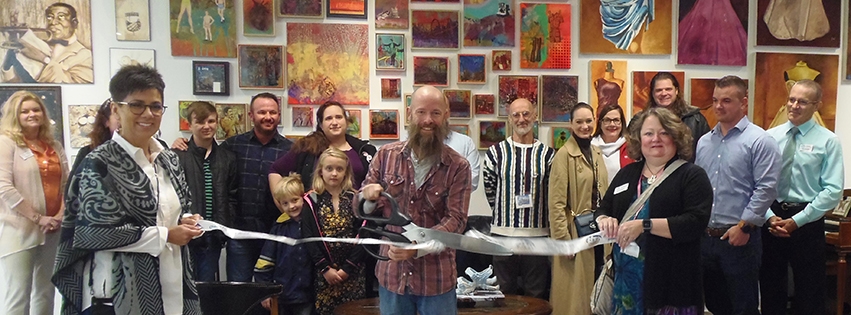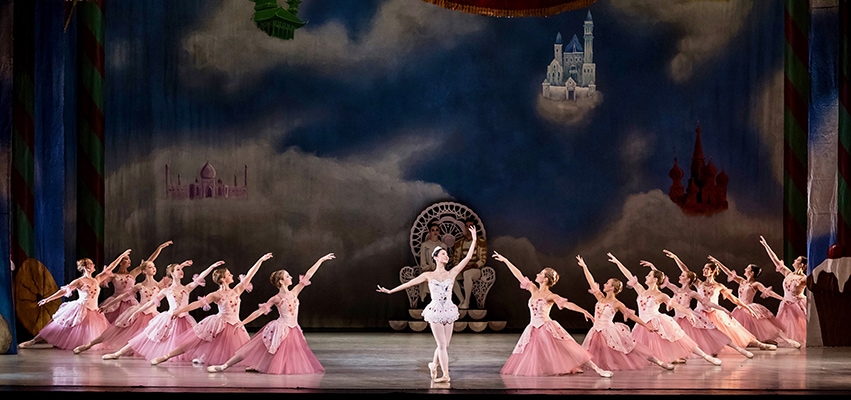Location, location, location. That’s been the song and dance for the Peoria Ballet since 2004, when Artistic Director Erich Yetter and the Board of Directors began setting the stage for the company’s move from 8800 North Industrial Road to 809 West Detweiller Drive in Peoria. Much like the intricate costumes and lavish sets that grace the stage of each performance, the move began as a small idea that eventually became reality with the company’s relocation and upgrade to the latest dance studios and technology.
“We’d been discussing the move for a long time,” said Yetter. “Our facilities on Industrial Road were not adequate because we had no room. We were storing sets outside, and they were becoming ruined. It was a great loss, and it was time for a change.”
After settling on a site, the Ballet teamed with Junction City to carry out the plans and hosted a relocation fundraiser at the Peoria Country Club in 2007, which raised about $350,000. The Ballet prefaced its next phase of community service with a ribbon cutting ceremony on August 9th. A former warehouse-turned-wonderland, the Detweiller building was first owned by the Pipco Company and holds sufficient promise for small beginnings and ample space for masks, wings and Cinderella’s slippers. “When it’s empty, it looks like a church,” observed Yetter, “but when it’s full, you need it to be big!”
A tour of the building includes briefings on several rooms, each underwritten by various groups and individuals, including Caterpillar, Drs. Stephen Cullinan and Theresa Falcon, and The Children’s Hospital of Illinois. Nearest the entrance, not far from the staff offices and teacher’s lounge, the tap studio sports new mirrors and state-of-the-art floors made with heat-sealed linoleum by Harlequin. A few doors down, the stars’ and starlets’ dressing rooms are stocked with lockers donated to the Ballet by Woodruff High School.
The starlets’ dressing room, designed for advanced dancers, is used for evening rehearsals running between 12 and 20 hours per week. The largest rehearsal room in the building, standing 16 by 40 feet, is the Caterpillar Studio. A huge advantage for dancers formerly accustomed to practicing in cramped spaces, the studio’s vastness allows performers to rehearse on a stage similar in size to the Civic Center Theatre stage, on which several performances take place.
 Two additional studios, the Falcon studio and the children’s studio— the smallest of the three—provide sufficient space for rehearsals made up of various age groups. “The different studios allow for us to instruct more classes simultaneously and help us coordinate schedules,” explained Yetter.
Two additional studios, the Falcon studio and the children’s studio— the smallest of the three—provide sufficient space for rehearsals made up of various age groups. “The different studios allow for us to instruct more classes simultaneously and help us coordinate schedules,” explained Yetter.
Farther down the winding corridor, the costume storage room houses close to 4,000 garments. “Every costume begins as a sketch,” Yetter said, motioning to a drawing of a woman in a sheer violet gown hung upon the wall.
Above, costumes hang by the hundreds from the ceiling, while yards of fabric fill the storage spaces below. “These are the costumes we use for The Nutcracker’s Sugarplum Fairies,” noted Yetter, pointing to a bouquet of airy white dresses hovering above his head.
Not far from the costume gallery, the storage room overflows with props, including Cinderella’s clock and a painted portrait of Tchaikovsky, which hangs above the mantel in The Nutcracker’s living room setting. “I asked that this picture be painted especially for The Nutcracker because Tchaikovsky composed the play’s music,” smiled Yetter. He added, “It’s great to be able to have all of our costumes and all of our sets at one location. We have heat and air conditioning so that the rooms are climate-controlled, and the summer heat does not damage the sets. Everything here is bigger, cleaner and more modern. We have state-of-the-art technology and flooring, and we also have more windows than we had before. The little things make it easier on everyone.”
A break room and a loading dock at the rear of the building complete the circular tour leading back to the main offices. Throughout the building, workers added walls, dropped the ceiling 15 feet and raised the floor four feet to make the space more conducive for classes and instruction. “Our clients really feel like they’re better served,” said Yetter. “The facilities here are closer to what some would call ‘big-city caliber.’” 
Yetter claims that the location itself is a prime choice for business because it’s close to the familiar crossroads of Knoxville and Detweiller near Route 6, which connects the Ballet to students from Chillicothe, Eureka and Morton. “The connection to the community is important because we rely so much on volunteers to help us,” he said. “We want our clients to know what a professional studio is all about decades after it first began. We will serve the community in the best way possible now and into the future. That is our goal.”
The Peoria Ballet showcases several different types of performances, ranging from Cinderella to William Shakespeare’s A Midsummer Night’s Dream to Wings. One of the Ballet’s largest performances, Giselle, will take place on March 7th of next year. Based on Romanian legend, the performance tells the story of a simple maiden thwarted in love who dies of a broken heart and portrays life in all the robustness of a forgotten time and place.
For more information, log onto peoriaballet.com or call Erich Yetter at (309) 690-7990. a&s


